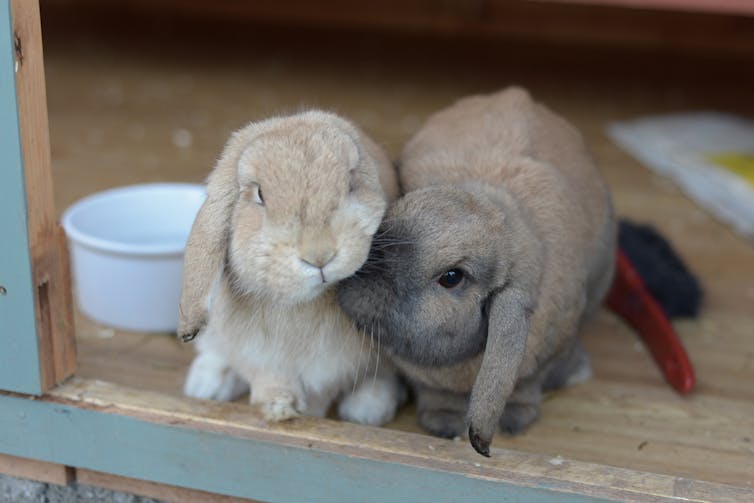The sometimes astonishing sex lives of animals are well known, especially the huge range in penis structures, evolved to increase the number of offspring that males father. For example, ducks have corkscrew-shaped penises, and echidnas (also known as spiny anteaters) have a four-headed penis. But what about female genitalia?
For hundreds of years, scientists assumed most animals didn’t have a clitoris. But new discoveries are revealing how female sex organs are just as interesting and varied as male ones.
The female reproductive tracts often mirror those of the males – genital tracts of female ducks are also corkscrew-shaped – and co-evolve to promote successful sperm transfer. But it turns out that scientists often overlook or miss the clitoris altogether.
Although the clitoris has been documented in some lizard species including geckos and monitor lizards, it had never been studied before in snakes, so many scientists assumed there wasn’t one.
Read more:
The clitoris – a brief history
However, research published in December 2022 revealed snakes have not one but two, located under the tail. Mistaken as scent glands for many years, the clitoris does exist in snakes, and is made up of two connected parts.
Once scientists looked for it, the clitoris (known as a hemiclitore in snakes and lizards) was actually found in nine species of snake, from four different families, including the cantil viper, death adder and carpet python. It is made up of erectile tissue and bundles of nerves, which indicates it is more than just an underdeveloped penis and probably has a reproductive function.
Anish Anil/Shutterstock
Why do we know so little about clitorises?
Science used to be dominated by men, who weren’t as interested in the female anatomy as they were in the male anatomy. And a penis is more obvious than a clitoris, making it easier to study.
Until recently, it was not socially acceptable to talk about the clitoris at all. Witch hunting guides from the middle ages referred to it as the “devil’s teat” and claimed only witches had one.
The taboo is largely because the clitoris is a sexual organ, known to give pleasure in humans. In fact, French 17th-century literature referred to the clitoris as the “gaude mihi”, which roughly translates as “please me”.
The clitoris is a region with thousands of nerve cell endings, making it highly sensitive. It is formed from the same tissue as the penis, so when it is aroused, it becomes engorged and swells in size. When a penis or clitoris is stimulated, it causes muscle contractions. These can result in ejaculation in males, but what about females?

Rhys Leonard/Shutterstock
There is evidence having an orgasm is linked to
higher fertility. For example, artificial insemination studies in cattle have found stimulation of the clitoris can help increase pregnancy. As stimulation results in contractions of the reproductive tract, it is likely that sperm is then drawn further in to the uterus, increasing fertilisation success.
Once you start looking
The clitoris is more noticeable in several species than others, such as crocodiles and non-human primates like capuchins, and tends to be positioned in a way as that creates stimulation during copulation (again, probably to increase reproductive success). Actually, in species such as rabbits and camels, where ovulation needs to be induced by copulation, it is possible that stimulation of the clitoris could cause ovulation.
Several studies have noted that female primates, such as macaques, experience orgasms, both during copulation and through self-stimulation or homosexual encounters. This is also true of bonobos who indulge in homosexual and heterosexual encounters for pleasure, to maintain pair bonds or to resolve aggressive encounters.
In these species, as well as dolphins, the clitoris is relatively large compared to other animals which makes homosexual stimulation easier. In a few species, including the spider monkey, the clitoris is so enlarged that it can resemble a penis.
However, the most notable clitoris is that of the spotted hyaena. The females urinate and give birth through their huge penis-like clitoris, and even signal dominance with erections.
The majority of birds lack a penis or a clitoris. Instead they have a single orifice called a cloaca that is used for defecation as well as reproduction in both males and females. However, some male bird species such as the ostrich have a penis. Interestingly, the female ostrich has a clitoris to complement the male penis.
So, it is likely that wherever there is a penis, there is also a clitoris.



